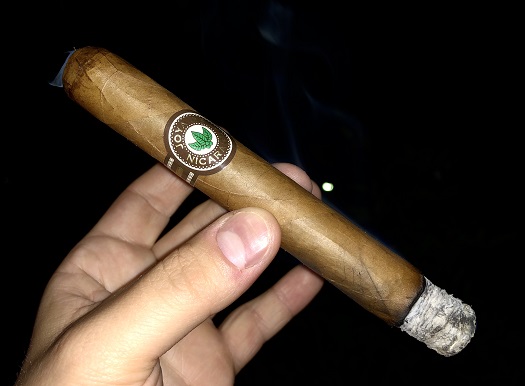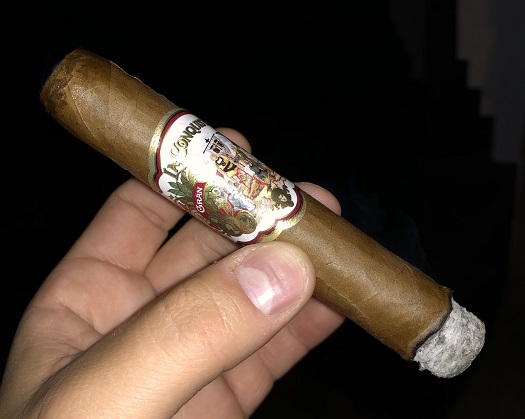Cigar Review: Joya de Nicaragua Clásico Toro
30 Jul 2018

About a month ago, Joya de Nicaragua announced the reintroduction of the Clásico line to the U.S. market. The move to bring back “the first Nicaraguan cigar ever†seems fitting at a time when the company is celebrating its golden anniversary.
 “Clásico goes back to America at a moment when we have reached the highest quality standards at the factory in our 50-year history,†said Mario Perez, sales director for Joya de Nicaragua. “But we kept the same blend that the founders of the company created, the blend that once captivated world leaders when it was the official cigar of the White House back in the 70s.”
“Clásico goes back to America at a moment when we have reached the highest quality standards at the factory in our 50-year history,†said Mario Perez, sales director for Joya de Nicaragua. “But we kept the same blend that the founders of the company created, the blend that once captivated world leaders when it was the official cigar of the White House back in the 70s.”
In a departure from the powerful smokes for which the company is known, Joya is marketing Clásico as “mild†and “creamy.†There are 6 formats, each packaged in 25-count boxes: Churchill (6.9 x 48, $8.50), Toro (6 x 50, $8.15), Consul (4.5 x 52, $7.00), Torpedo (6 x 52, $9.50), Número 6 (6 x 41, $6.50) and Señorita (5.5 x 42, $5.50).
The recipe remains the same as it did decades ago. The wrapper is Cuban-seed Ecuadorian Connecticut, and the binder and filler tobaccos are, of course, Nicaraguan.
I sampled the Toro for this review. In addition to traditional, understated, and—in my opinion—beautiful bands that nicely highlight the golden color of the smooth, buttery wrapper, this cigar has bright, crisp pre-light notes of sweet hay at the foot. The cap clips cleanly to reveal a smooth cold draw.
Once an even light is established, I find a creamy texture and a medium body to the smoke. The flavors include white pepper, oak, and café au lait. Roasted peanut comes to the fore after half an inch; this is the most enjoyable segment of the cigar.
About a third of the way in, there is a notable decrease in what was already a soft spice, and the creaminess ramps up. The profile teeters between mild and medium once you reach the halfway mark. Here, the roasted peanut is now a creamier peanut, and the former base of white pepper and oak is mostly oak. At times, I can pick up hints of melon.
The finale is mellower than I expected. There is no spice, and the overall taste is somewhat papery with a subdued creaminess. As a result, I found myself setting the cigar down earlier than I do with most smokes.
The construction is in line with the standards that are characteristic of Joya de Nicaragua: straight burn, smooth draw, sturdy ash, and voluminous smoke production.
I enjoy mild cigars, but mild cigars need to have flavor. The Clásico Toro has flavor. At times it shines, and at times—especially the final third—it falls a little short. I’m going to try the other sizes to see if this is true across the board, or if other formats behave differently in this regard. For now, I’m awarding the Joya de Nicaragua Clásico Toro three stogies out of five.

[To read more StogieGuys.com cigar reviews, please click here.]
photo credit: Stogie Guys




 I know I’m not the only one with a challenging schedule. Chances are you, too, find it difficult to set aside the requisite time to thoroughly enjoy a fine cigar.
I know I’m not the only one with a challenging schedule. Chances are you, too, find it difficult to set aside the requisite time to thoroughly enjoy a fine cigar.
 Flash forward to this spring when my colleague
Flash forward to this spring when my colleague 

 The Anniversario addition to the Casa Fernandez portfolio started in 2013. That year, 20,000 limited edition cigars were made, and Casa Fernandez decided to make the same amount in 2014. (In 2015, the most recent release of the series, two different sizes were released, but total production was limited to under 15,000 cigars.)
The Anniversario addition to the Casa Fernandez portfolio started in 2013. That year, 20,000 limited edition cigars were made, and Casa Fernandez decided to make the same amount in 2014. (In 2015, the most recent release of the series, two different sizes were released, but total production was limited to under 15,000 cigars.) Interestingly, the wrapper on the No. 2 is from Costa Rica, not a more traditional maduro wrapper, such as Connecticut Broadleaf. In fact, the overall blend is a bit unconventional, with a Honduran binder and filler from Nicaragua and Honduras.
Interestingly, the wrapper on the No. 2 is from Costa Rica, not a more traditional maduro wrapper, such as Connecticut Broadleaf. In fact, the overall blend is a bit unconventional, with a Honduran binder and filler from Nicaragua and Honduras.
 Villiger has been making cigars in Brazil since the 1970s. This newer, bigger factory (30 rollers, with the capacity to add 20 more), however, signals a redoubled commitment to the country and its tobaccos. Villiger Do Brasil—along with the recent relocation of U.S. corporate headquarters to the Miami area—is further evidence of Villiger’s interest in expanding its presence in the premium cigar market (Villiger is a major player in the machine-made realm).
Villiger has been making cigars in Brazil since the 1970s. This newer, bigger factory (30 rollers, with the capacity to add 20 more), however, signals a redoubled commitment to the country and its tobaccos. Villiger Do Brasil—along with the recent relocation of U.S. corporate headquarters to the Miami area—is further evidence of Villiger’s interest in expanding its presence in the premium cigar market (Villiger is a major player in the machine-made realm).
 Patrick Ashby
Co-Founder & Editor in Chief
Patrick Ashby
Co-Founder & Editor in Chief Patrick Semmens
Co-Founder & Publisher
Patrick Semmens
Co-Founder & Publisher George Edmonson
Tampa Bureau Chief
George Edmonson
Tampa Bureau Chief